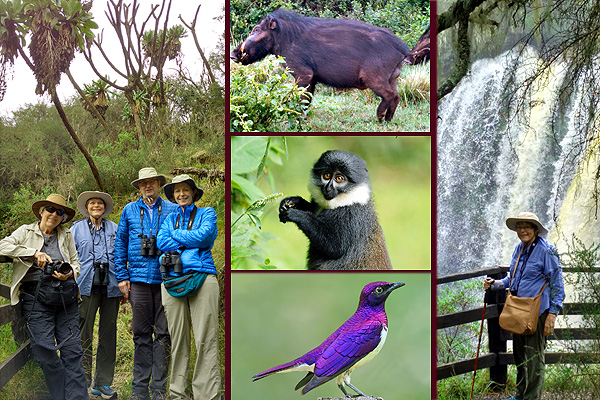 Most Americans traveling to East Africa for a big game safari only visit Tanzania. This is a switch from a historic situation that began when safari travel earnestly began in the 1960s right up to the first Kenyan political trouble of the early 2000s.
Most Americans traveling to East Africa for a big game safari only visit Tanzania. This is a switch from a historic situation that began when safari travel earnestly began in the 1960s right up to the first Kenyan political trouble of the early 2000s.
But Kenya is coming together, again and personally I think for a good long while. There are wild animal aspects to Kenya which simply can’t be replicated in Tanzania, and that’s how my group began their safari here.
After visiting the National Museum we began the drive north into the Kikuyu highlands, judiciously on a weekend. Any other day of the week is impossible. The traffic is untenable, as six to eight lanes of highway clog up for miles.
All along the highway for more than an hour — virtually up to the Tana River — all we could see out the car windows was a continuous megalopolis of highrises stacked shoulder to shoulder. This is what “booming” means in Kenya and it’s a terrible mixture of good and bad.
The bad are the millions impoverished and threatened with poor housing and sanitation, mostly young people who have immigrated to the urban area from rural areas that give them no opportunities.
We arrived the Aberdare Country Club early enough in the afternoon to take a stroll over its three-hole golf course. No one was golfing, but there were six zebra on Hole 4, two eland on the tee for the last hole and baboon and warthog strung most everywhere else.
That night’s delightful highland sleep was challenged by the incessant screaming of the tree hyrax. I find it entertaining.
The next day and night we spent in the Aberdare National Park, first on a long all day game drive up to Chania Falls around 10,000′ in the beautiful tundra.
At any time of the year this drive is spectacular, starting at around 6600′ and reaching 11,100′ where the great waterfalls of the park form the Ewaso Nyrio River which drops onto the desert and dies shortly thereafter.
But as the rains begin, so many beautiful wild flowers appear! These are mostly endemic, and I was not personally familiar with them. Many, in fact, will be endemic not just to the high altitudes of East Africa, but to the specific national park itself.
So there were splashes of red, yellow, blue and purple at almost every turn. Some of the heather was even displaying its white bubble blooms. The great bamboo forests had recovered from terrible fires a few years back, and their new lemony shoots nearly whistled in the wind.
On the way we saw dozens of black-and-white colobus monkey, about a dozen l’Hoest’s monkey and quite a few of its close relative, the sykes monkey. L’Hoest’s always makes me momentarily think I’m in Siberia. Its tiny little face is surrounded by so much beautiful hair, it’s like a person retreating into her winter hood.
We also saw lots of warthog, bushbuck, waterbuck and quite a few buffalo. Near the top we got good pictures of the rare Jackson’s Francolin and all of us got a fleeing glimpse of the very endangered red duiker.
During our overnight at The Ark folks saw hyaena stalking bushbuck, and a quite prized sighting of the giant forest hog. The hog is the largest pig on earth and it’s restricted to the threatened highland rainforests of Africa.
On the drive out of the park this morning we were trumpeted by elephant and encountered quite a few additional giant forest hog on the road!
We still have lots of rare stuff to find in Kenya’s Northern Frontier where we go tomorrow. Stay tuned!